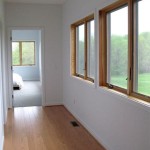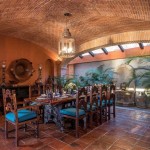Lighting Interior Design: Illuminating Your Space
Lighting plays a crucial role in interior design, shaping the mood, ambiance, and functionality of a space. From the natural light that streams through windows to the strategically placed artificial light sources, lighting has the power to enhance aesthetics, create visual interest, and impact our overall experience of a room. Understanding the principles of lighting design allows you to create an environment that is both visually appealing and comfortable.
Types of Lighting
There are three primary types of lighting used in interior design: ambient, task, and accent lighting.
Ambient lighting, also known as general lighting, provides overall illumination for a room. It establishes the base level of brightness and sets the overall mood. Ambient lighting is typically achieved through ceiling fixtures, such as chandeliers, flush mounts, or recessed lights. It can also be provided by floor lamps or sconces placed strategically around the room.
Task lighting is designed to provide focused illumination for specific activities. It helps enhance visibility and reduce eye strain during tasks such as reading, cooking, or working at a desk. Task lighting can be achieved through desk lamps, under-cabinet lighting, and pendant lights positioned above kitchen islands or dining tables.
Accent lighting is used to highlight specific features or objects in a room, adding visual interest and drama. It directs attention to artwork, sculptures, architectural details, or decorative elements. Accent lighting can be achieved through track lighting, spot lights, or wall sconces, often using focused beams of light to create dramatic effects.
The Importance of Natural Light
Natural light is an essential component of a well-designed interior. It provides numerous benefits, including improved mood, increased energy levels, and a sense of spaciousness. Maximizing natural light involves strategic window placement, utilizing light-colored walls and furniture, and minimizing obstructions that block light flow.
However, it is important to consider the potential drawbacks of excessive natural light, such as glare and heat. Using window treatments like blinds, curtains, or shades can help regulate the amount of natural light entering a space and create a comfortable environment.
Principles of Lighting Design
Effective lighting design is about creating balance and harmony. It involves considering factors such as:
- Brightness: The amount of light in a space should be appropriate for the intended function.
- Color temperature: Different light sources emit different colors of light, measured in Kelvin (K). Warm white (2700-3000K) creates a cozy and inviting atmosphere, while cool white (4000-4500K) provides a brighter and more stimulating environment.
- Direction: The direction of light influences how objects and spaces appear. Uplighting can create a sense of spaciousness, while downlighting can create a more intimate atmosphere.
- Shadows: Shadows play a crucial role in creating depth and dimension. Strategic use of shadows can enhance visual interest and highlight architectural details.
- Contrast: Varying the level of brightness and color temperature between different areas in a room can create visual excitement and emphasize focal points.
By carefully considering these principles and experimenting with different types of lighting, you can create a dynamic and visually appealing environment that meets your specific needs and preferences.
Lighting for Different Rooms
The lighting requirements for different rooms vary depending on their function and atmosphere.
- Living Rooms: Living rooms typically benefit from a combination of ambient, task, and accent lighting. Consider using a combination of ceiling fixtures, floor lamps, and table lamps to create a comfortable and inviting atmosphere.
- Bedrooms: A mix of soft ambient lighting and reading lamps is ideal for bedrooms. Dimmer switches and bedside lamps can help create a relaxing atmosphere for sleep.
- Kitchens: Kitchens require ample task lighting for cooking, as well as ambient lighting for overall illumination. Under-cabinet lighting, pendant lights over work islands, and recessed lighting can provide both functionality and style.
- Bathrooms: Bathrooms require a combination of bright task lighting over mirrors and vanities, as well as softer ambient lighting to create a spa-like atmosphere.
With careful planning and attention to detail, lighting can transform any space into a vibrant and inviting environment that reflects your unique style and enhances your everyday life.

The Importance Of Lighting In Interior Design Create Beautiful 3d Designs

The Importance Of Lighting In Interior Design

Diffe Types Of Interior Lighting Home Reno Pte Ltd

Importance Of Lighting In Interior Design John Cullen

Warm Interior Design With A Soft Lighting Scheme

10 Lighting Design Ideas For Your Home Id Lights Interior Corridor Lobby

16 Best Interior Lighting Tips To Beat The Winter Blues Foyr

Why Lighting Is So Important For Interior Design Pauls Electric Service

Why Is Lighting Important In Interior Design Schneider Electric

Importance Of Lighting In Interior Designing








